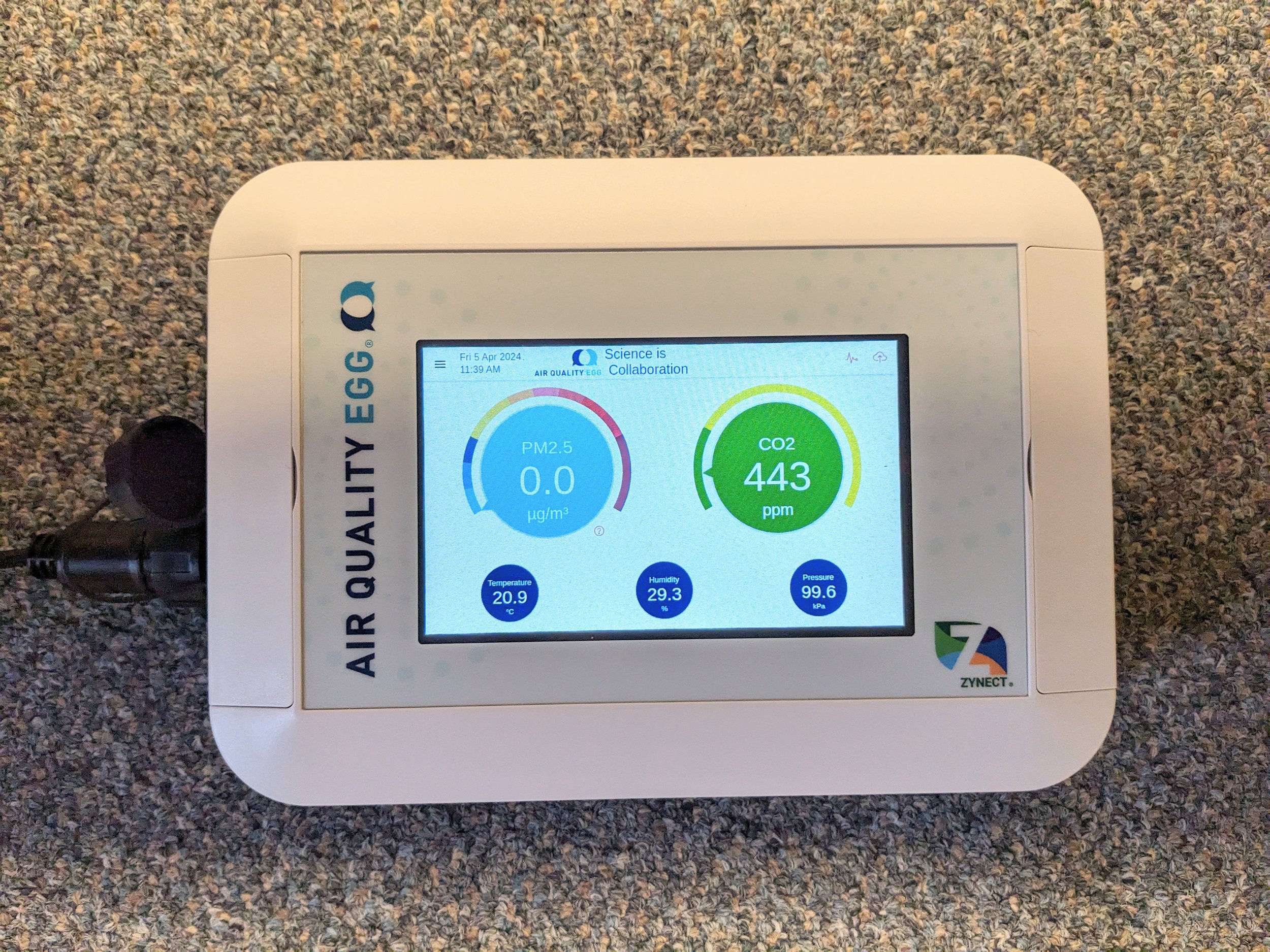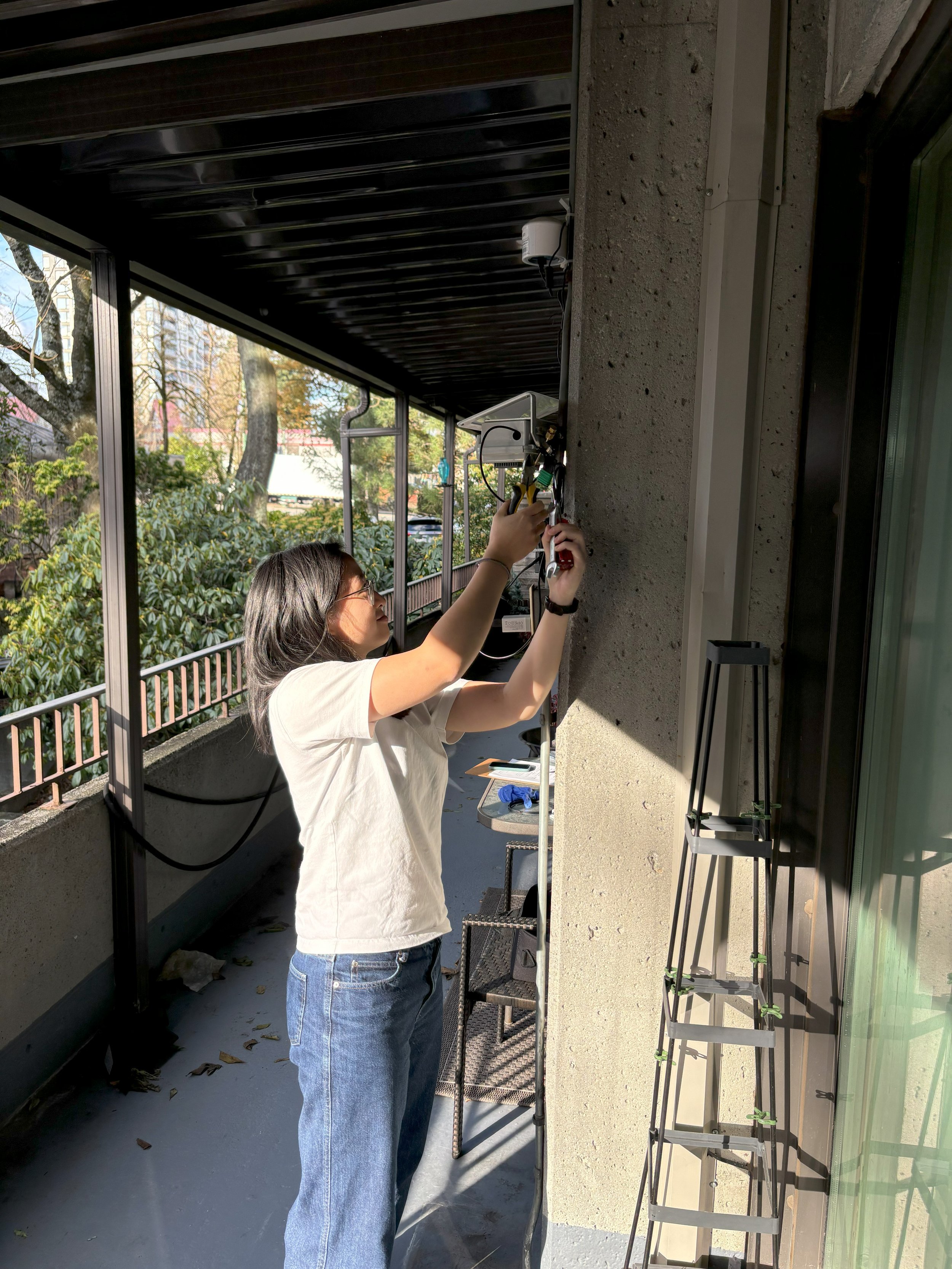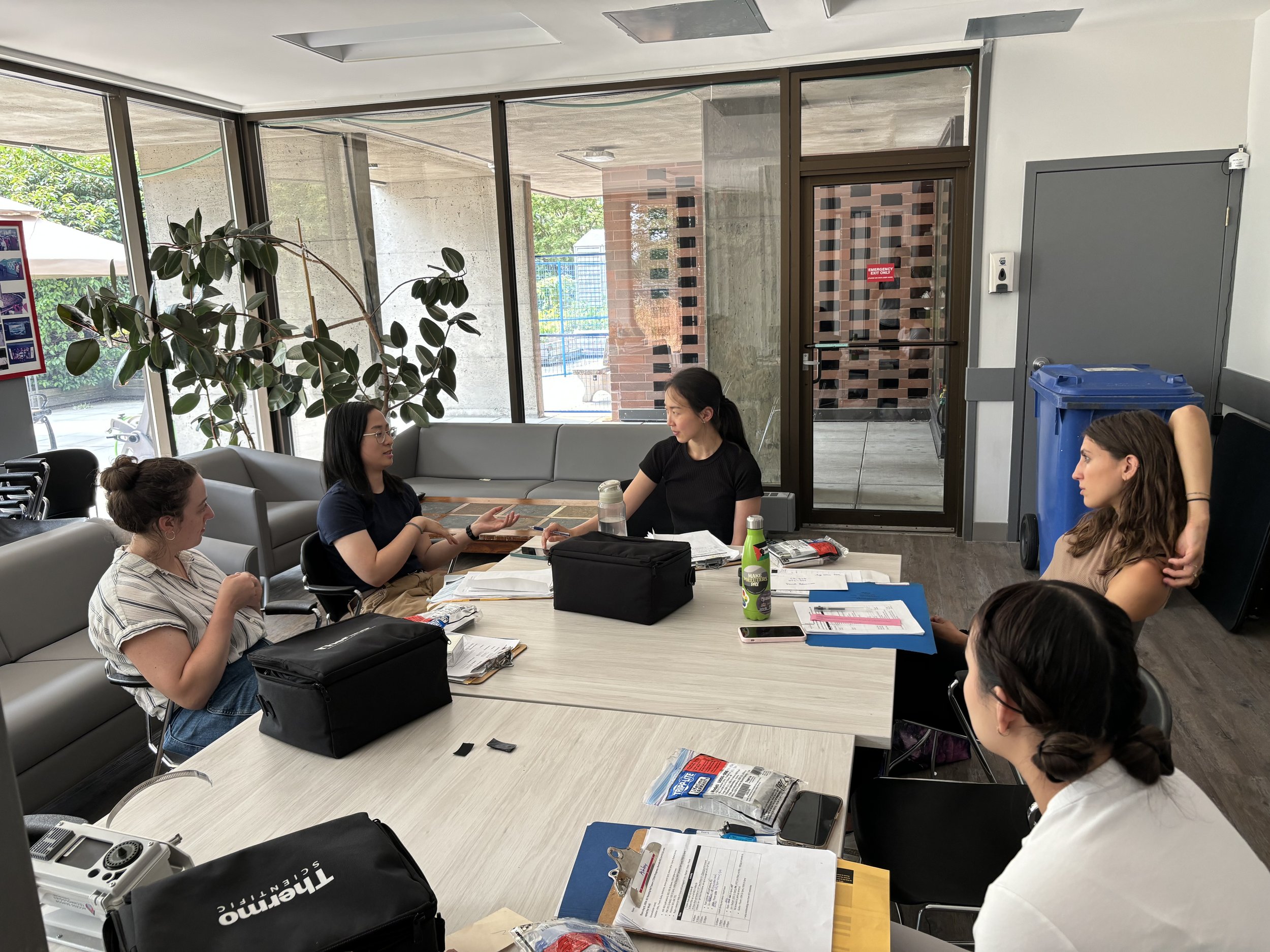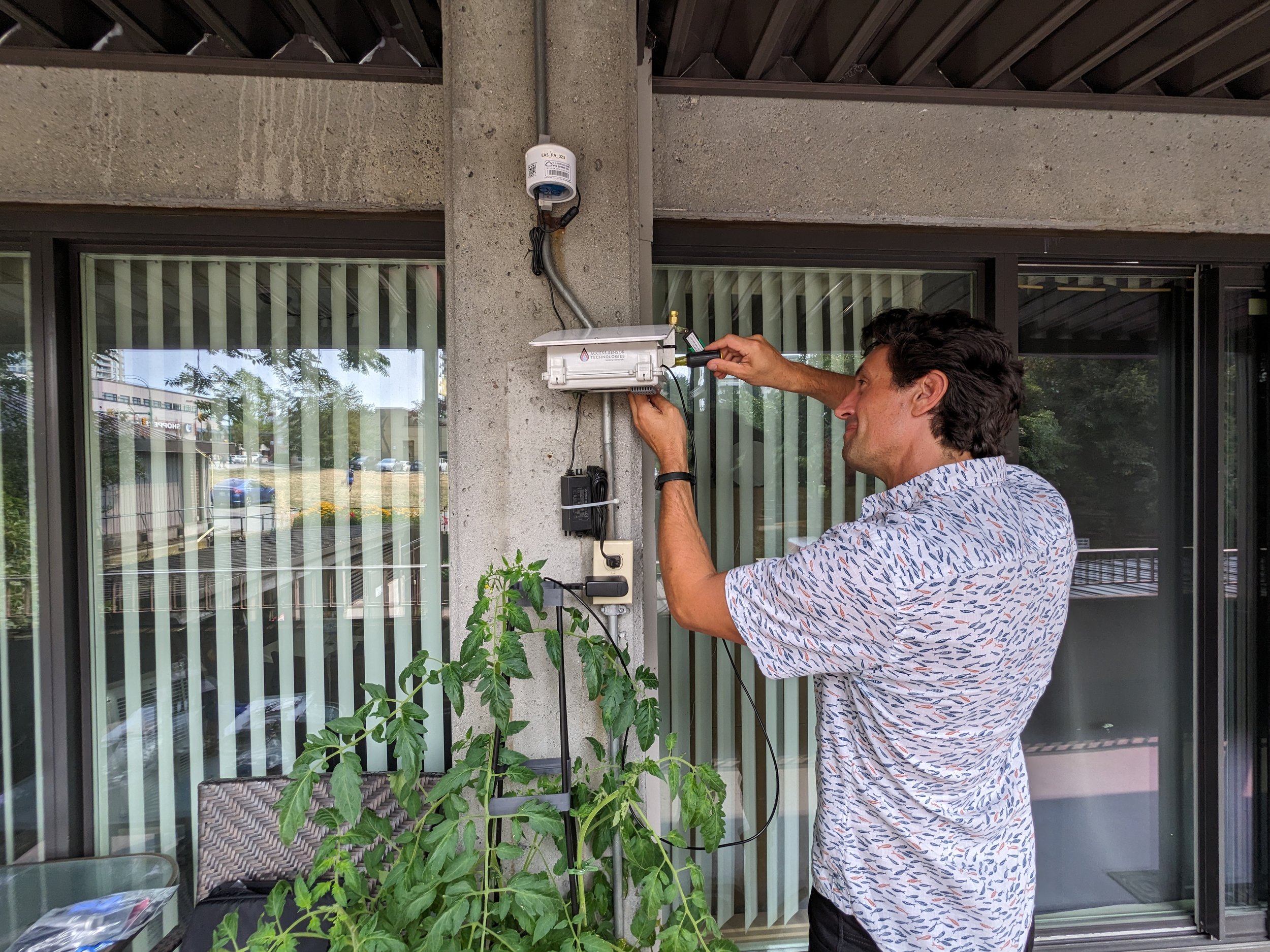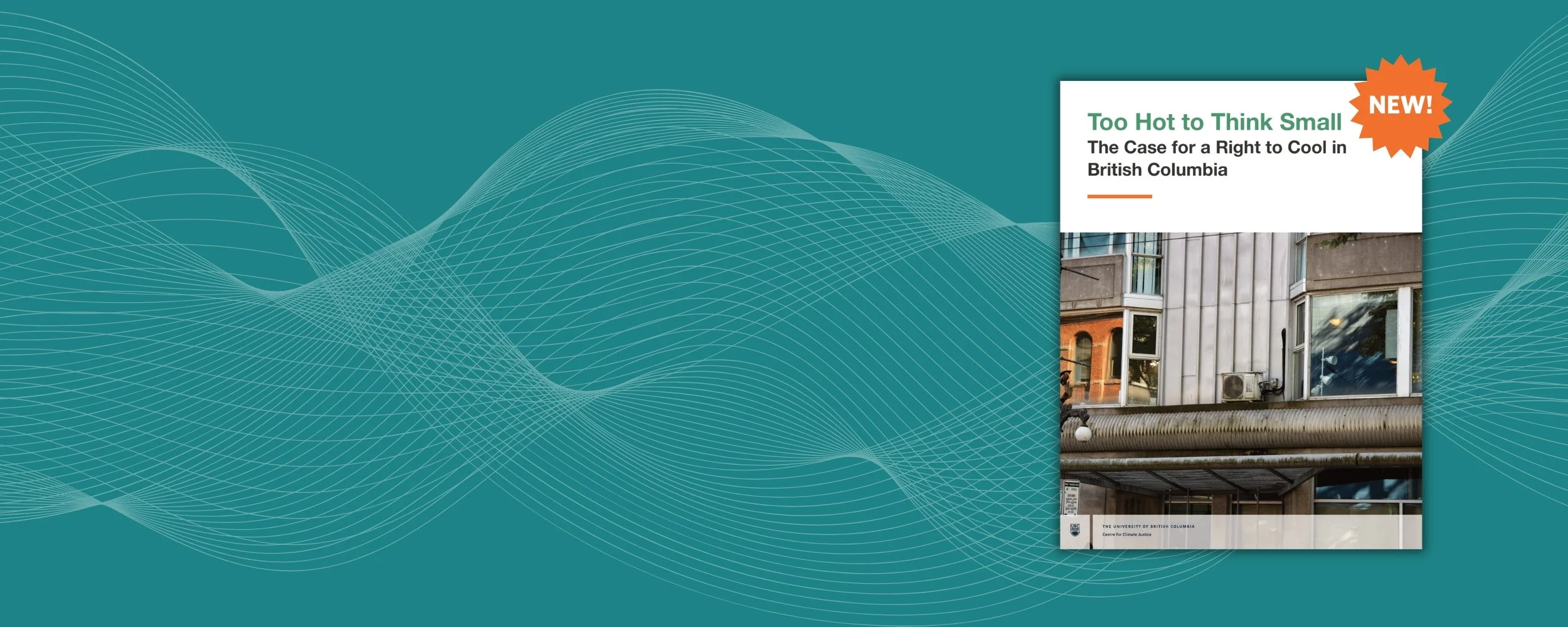Our Research
Related research
-
Li, A., Toll, M., Chapman, R., Howden-Chapman, P., Hernández, D., Samuelson, H., Woodward, A., & Bentley, R. (2025). Housing at the intersection of health and climate change. The Lancet. Public Health, 10(10), e865-e873. https://doi.org/10.1016/S2468-2667(25)00141-0
Abstract: Anthropogenic climate change is causing rapid shifts in temperature and weather patterns, both in location and intensity, making living conditions increasingly hazardous. This complicates housing's frontline role in protecting human health. When housing systems fail to provide universal access to secure, affordable, and suitable housing, social and health inequalities related to climate change are amplified. The location, construction, and operation of homes influence greenhouse gas emissions and must be improved to reduce their environmental impacts. This paper, the second in a Series on housing as a social determinant of health, builds a framework for conceptualising the interactions between housing, climate, and health. It identifies the pathways through which climate change affects housing and exacerbates health risks, and reflects on policy responses for climate resilience in housing and health.
-
https://www.russellsage.org/publications/powerless
Energy serves as the lifeblood of our daily experiences. It permeates virtually every aspect of our existence, facilitating nourishment, safety, and productivity. When affordability threatens energy’s availability, a family’s living situation can become untenable—too cold, too hot, too dark, and too often, unhealthy and unsafe. In Powerless, sociologists Diana Hernández and Jennifer Laird reveal the hidden hardship of “energy insecurity” – the inability to adequately meet household energy needs.
Approximately one in ten households in the U.S. are energy insecure and four in ten are at risk for energy insecurity. These statistics alone do not convey the acute pain of utility shutoffs, or the relentless toll of chronic energy hardships marked by difficult choices and harsh living conditions. Drawing on survey data and interviews with one hundred energy-insecure individuals and families, Hernández and Laird detail the experience of energy insecurity. Individuals and families suffering from energy insecurity endure economic hardships, such as difficulty paying utility bills, utility debt, and disconnection from utility services. They also struggle with physical challenges, such as poor housing conditions and poor or dysfunctional heating and cooling systems. They are often forced to make difficult choices about what bills to pay. These decisions are sometimes referred to as “heat or eat?” choices, as families cannot afford to pay for heating and food at the same time. Energy insecure individuals and families employ a variety of strategies to keep energy costs down to avoid having to make these hard choices. This includes deliberate underconsumption of energy, enduring physical discomfort, and using dangerous alternatives such as open flames, ovens, or space heaters to try to maintain a comfortable temperature in their home. To be energy insecure is to suffer. Despite the heavy toll of energy insecurity, most people confront these difficulties behind closed doors, believing it is a private matter. Thus, the enormous social crisis of energy insecurity goes unnoticed.
Hernández and Laird argue that household energy is a basic human right and detail policies and practices that would expand access to consistent, safe, clean, and affordable energy. Their proposals include improving the current energy safety net, which is limited and often does not serve the most energy insecure due to stringent program requirements and administrative burdens. They also suggest redesigning rates to accommodate income, promoting enrollment and expansion of discount programs, reforming utility disconnection policies, improving energy literacy, and ensuring an equitable shift to renewable energy resources.
Powerless creates a comprehensive picture of the complex social and environmental issue of energy insecurity and shows how energy equity is not just an aspiration but an achievable reality.
DIANA HERNÁNDEZ is an associate professor of sociomedical sciences, Columbia University
JENNIFER LAIRD is an assistant professor in the department of sociology, Lehman College
-
Building on Dr. Liv Yoon’s postdoctoral work at Columbia University in partnership with South Bronx Unite and NYC’s Environment and Health Data Portal Team, this interactive heat map gives voice to heat experiences, beyond numbers alone. Live on the Environment and Health Data Portal, it can also be cross-referenced with other environment and health products such as Real Time Air Quality, the Heat Vulnerability Index, data stories, and many more.
Continued goals of the project
Highlight inequitable heat + health impacts through community narratives
Humanize the effects of heat and extreme heat by going beyond just quantitative data
Ensure ongoing maintenance to the page
Open up the submission portal to more stories
-
Stern, R.N., & Arefin, M.R. (2024). Extreme Heat in the Home: Understanding the 2021 Pacific Northwest Heat Wave through the British Columbia Coroners Report. Journal of Disaster Studies1(1), 103-118. https://muse.jhu.edu/article/936412.
Abstract: In 2021, there was an unprecedented heat wave across the Canadian province of British Columbia that led to the deaths of 619 people, almost all of whom died in their homes. This research note focuses on a report from the BC Coroners Service that explores quantitative data on who died during the heat dome and puts forward key recommendations for future events. We argue that this report focuses too heavily on the immediate causes of death and suffering and does not thoroughly address the important structural factors of inequality that underpin how people experience heat in their homes. Drawing on political ecology, we highlight housing injustice and tenancy in British Columbia as key structural components of inequality, and discuss unaffordability and individual contexts that contribute to how people experience heat events differently across scales and geographies. We also discuss debates around recent policies on air conditioning and the Material and Social Deprivation Index. We conclude that while the Coroners Service report has made valuable contributions to statistical knowledge, its conclusions and recommendations do not go far enough to address the underlying structural factors of housing insecurity.
-
Yoon, L., Richardson, G. R. A., & Gorman, M. (2024). Reflections on a century of extreme heat event-related mortality reporting in Canada. GeoHealth, 8, e2023GH000895. https://doi.org/10.1029/2023GH000895
Abstract: Climate change is causing more frequent and severe extreme heat events (EHEs) in Canada, resulting in significant loss of life. However, patterns across mortality reporting for historical EHEs have not been analyzed. To address this gap, we studied deaths in Canadian EHEs from 1936 to 2021, identifying trends and challenges. Our analysis revealed inconsistencies in mortality data, discrepancies between vulnerable populations identified, difficulties in determining the cause of death, and inconsistent reporting on social vulnerability indicators. We provide some observations that could help inform solutions to address the gaps and challenges, by moving toward more consistent and comprehensive reporting to ensure no population is overlooked. Accurately accounting for affected populations could help better target evidence-based interventions, and reduce vulnerability to extreme heat.
-
Yoon, L., Tetzlaff, E. J., Wong, C., Chiu, T., Hiscox, L., Mew, S., Choquette, D., Kenny, G. P., & Schütz, C. G. (2024). Responding to the Heat and Planning for the Future: An Interview-Based Inquiry of People with Schizophrenia Who Experienced the 2021 Heat Dome in Canada. International Journal of Environmental Research and Public Health, 21(8), 1108. https://doi.org/10.3390/ijerph21081108
Abstract: People with schizophrenia have died at disproportionately higher rates during recent extreme heat events (EHEs) in Canada, including the deadly 2021 Heat Dome in British Columbia (B.C.). However, to date, little research has qualitatively focused on how people with schizophrenia experience and respond to EHEs. This study aimed to (i) explore how people with schizophrenia experienced and were impacted by the 2021 Heat Dome physically, cognitively, and emotionally and (ii) understand their level of awareness and health-protective actions taken in response to the EHE. Between October 2023 and February 2024, interviews were conducted with 35 people with schizophrenia who experienced the 2021 Heat Dome in a community setting within B.C., Canada. The semi-structured interviews were guided by pre-defined questions to explore the participant’s background, living situation, social network, awareness and access to heat-mitigation measures. The transcripts were analyzed using a descriptive form of thematic analysis. Participants shared critical insights on how the EHE impacted them, including descriptions of mild to severe physical manifestations of heat stress (e.g., fainting, heat rashes), the triggering of schizophrenia-related symptoms (e.g., paranoia, hallucinations), and the detrimental effects on their energy levels and emotional stability, which further caused disruptions to their everyday life. Participants also illustrated gaps in knowledge and challenges experienced with accessing information, which hindered their ability to manage the heat exposure effectively and, for some, resulted in no actions (or counter-intuitive actions) being taken to mitigate the heat. These findings demonstrate the complex ways that individuals with schizophrenia experienced and responded to the 2021 Heat Dome and revealed various situational and contextual factors that further compounded the challenge of heat mitigation. These findings can support the development of tailored individual and community-level heat response and communication initiatives and strategies for people with schizophrenia.
-
Yoon, L., Tetzlaff, E. J., Chiu, T., Wong, C., Hiscox, L., Choquette, D., Mew, S., Kenny, G. P., White, R. F., & Schütz, C. G. (2024). Surviving the 2021 Heat Dome with schizophrenia: A qualitative, interview-based unpacking of risks and vulnerabilities. Social Science & Medicine, 366, 117656. https://doi.org/10.1016/j.socscimed.2024.117656
Abstract: This study explores the multifaceted challenges experienced by individuals with schizophrenia during extreme heat, highlighting the interplay between individual factors, social dynamics, and environmental influences. Despite making up only 1% of the Canadian population, individuals diagnosed with schizophrenia comprised 16% (n = 97) of the deaths during the 2021 heat dome in Western Canada. However, to date, there exists scant qualitative research that explore the direct experiences and the intricacies of intersecting factors faced by individuals with schizophrenia during extreme heat events. This study aims to explore experiences of heat by those living with schizophrenia, including social, behavioural and physiological vulnerability factors that may exacerbate heat-related risks.
Between October 2023 and February 2024, semi-structured interviews were conducted with 35 people with a clinical diagnosis of schizophrenia from in-patient and community settings. Participants had experienced the 2021 Heat Dome, or other extreme heat events, in a community setting within British Columbia, Canada. A descriptive form of thematic analysis that prioritizes participants’ experiences was used to identify and explore patterns in the interview transcripts.
Participants' narratives underscore how some symptoms of schizophrenia – such as paranoia and delusional thinking – may hinder participants' ability to seek relief from the heat and interpret bodily sensations accurately. Social isolation, compounded by societal stigma, acts as a significant barrier to accessing support networks and public resources for coping with extreme temperatures. Additionally, participants described feeling deterred from seeking medical care or public resources due to past negative experiences and social stigma.
Findings illustrate various factors that contribute to the disproportionate impact of extreme heat on individuals diagnosed with schizophrenia, encapsulating both schizophrenia-specific biomedical factors as well as social vulnerability associated with their diagnosis. These findings can inform the development of a multidimensional approach that transcends individual responsibility and addresses the systemic and structural determinants of health.
-
Yoon, L., Belotti, G., Stern, R. N., White, K., Mohajeri, A., Zhou, A., Rosales, E., Siao, E., Le, H. T., Masuda, J., Lee, E., & Buse, C. (2025). To cool or not to cool: understanding and improving cooling centre use in metro Vancouver through community-based participatory action research. Environmental Research Health. https://doi.org/10.1088/2752-5309/ada6f4
Abstract: Extreme heat events present significant health risks, particularly for populations facing systemic marginalization. Through interviews and FGs with 63 (n = 60 residents; n = 3 service providers (SP)) participants, this paper explores the barriers and opportunities related to access and use of cooling centres from both user and provider perspectives, as well as broader implications for addressing vulnerability to extreme heat in the metro Vancouver region of British Columbia, Canada. Initially focused on cooling centres, our research expanded to include the complexities of individual and systemic responses to heat, highlighting the complex interplay between personal preferences and structural barriers. Key barriers to cooling centre usage reported by participants included concerns over safety, hygiene, stigma, lack of information, and infrastructural challenges such as transportation. SPs faced constraints with staffing, limited hours, and underutilization of additional services. Tensions emerged between individual, do-it-yourself (DIY) approaches and collective solutions, with participants seeking agency in their choices while acknowledging the need for improved, community-based interventions. The study also uncovered the unintended effects of inclusivity, as the presence of individuals who use substances or are unhoused in cooling spaces deterred some potential users, underscoring the challenges of designing universally accessible services. Broader systemic issues, such as housing security and the quality of indoor environments, further intersected with vulnerability to extreme heat, exacerbating risks for those opting to stay at home. The paper recommends leveraging existing public spaces, enhancing social networks, improving tenant protections, and fostering 'right to cool' initiatives to balance immediate relief with long-term systemic reform, particularly around the rental housing crisis and tenant insecurity. By addressing both individual and collective needs, this approach can mitigate the health impacts of extreme heat while promoting greater equity and resilience.
-
Lane, K., Daouda, M., Yuan, A., Olson, C. Smalls-Mantley, L., Siegel, E., ^Hernández, D. 2024. “Readiness for a clean energy future: Prevalence, perceptions, and barriers to adoption of electric stoves and solar panels in New York City.” Energy Policy.
https://doi.org/10.1016/j.enpol.2024.114301
Abstract: Adoption of electric stoves and rooftop solar can reduce fossil-fuel reliance and improve health by decreasing indoor air pollution and alleviating energy insecurity. This study assessed prevalence and perceptions of these clean-energy technologies to increase adoption in New York City (NYC). A representative survey of 1950 NYC adults was conducted from February 28 to April 1, 2022. Fourteen percent of people had an electric stove; 86% had gas stoves. Black, Latino/a, and lower-income residents were more likely to have electric stoves than White and higher-income residents. Only 14% of residents were interested in switching from gas to electric stoves. Of the 71% with gas stoves uninterested in switching, nearly half (45%) preferred gas cooking, particularly among White and higher-income residents, indicating a large opportunity to shift preferences. About 5% used solar for their home or building; another 77% were interested in solar. Of the 18% uninterested in solar, reasons included lack of agency, confusion about operation, and costs. Education about health and cost benefits, induction technology, how to transition, available subsidies, and other efforts to reduce adoption barriers can support clean technology uptake. Residential clean energy metrics should be tracked regularly to ensure that technology adoption proceeds equitably.
-
Flores, N.M., Hernández, D., Fahey, C.A. et al. Assessing the Burden of Electrical, Elevator, Heat, Hot Water, and Water Service Interruptions in New York City Public Housing. J Urban Health 101, 990–999 (2024). https://doi.org/10.1007/s11524-024-00905-4
Abstract: Reliable electricity, elevators, heat, hot water, and water are aspects of safe and accessible housing. Interruptions to these services represent a persistent challenge faced by public housing residents in the New York City Housing Authority (NYCHA). We compiled outage data spanning 2020–2022 from NYCHA’s online service interruptions portal and paired these data with demographic and meteorological sources to understand the burden of these outages. To ease dissemination of these data—a spatiotemporally granular outage dataset that could fill gaps surrounding urban outage health impacts—we provide a public dashboard for visualization and download of the service interruption data in an analysis-ready format. We demonstrated that (1) outages often exceeded health-relevant restoration windows (e.g., 8 h for electrical interruptions); (2) senior developments (exclusively residents 62 +) had the longest duration of elevator, heat, and hot water outages; and (3) outages sometimes overlapped with temperature extremes—potentially increasing their health risk. Residents of NYCHA, who are predominately low-income, Black, and Hispanic face a disproportionate burden of service interruptions. Like all New Yorkers, NYCHA residents deserve to live in dignified housing that is safe and accessible. Addressing service interruptions are one way to make public housing safer and push toward climate and environmental justice.
-
Meltzer, G. Y., Factor-Litvak, P., Herbstman, J. B., Wylie, B. J., & Hernández, D. (2024). Indoor Temperature and Energy Insecurity: Implications for Prenatal Health Disparities in Extreme Heat Events. Environmental Health Perspectives, 132(3), 035001.
Background: Extreme heat events are a major public health concern and are only expected to increase in intensity and severity as climate change continues to accelerate. Pregnant people are physiologically more vulnerable to the effects of extreme heat, and exposure can induce harm on both the pregnant person and the fetus.
Objectives: This commentary argues that there is a need for greater epidemiological research on indoor heat exposure and energy insecurity as potential drivers of maternal and child environmental health disparities.
Discussion: While there is substantial evidence linking ambient (outdoor) high temperature to pregnancy-related outcomes, there is a lack of epidemiological evidence to date on pregnant people's exposure to high indoor temperature and adverse maternal and/or child health outcomes. Energy insecurity is disproportionately experienced by people with low incomes and/or people of color, and indoor temperature may play a role in shaping socioeconomic and racial/ethnic disparities in maternal and child health in the United States. Further research is needed to understand the relationship between indoor heat exposure, energy insecurity, and pregnancy outcomes in both parents and children and to inform potential policies and practices to enhance resilience and reduce maternal/child health disparities. https://doi.org/10.1289/EHP13706.
-
Jessel, S., Sawyer, S. and Hernandez, D. (2019) “Energy, Poverty and Health in Climate Change: A Comprehensive Review of an Emerging Literature” Frontiers in Public Health.
https://doi.org/10.3389/fpubh.2019.00357%C2%A0
Household energy is increasingly vital for maintaining good health. Unaffordable and inadequate household energy presents adverse consequences that are amplified by poverty and a changing climate. To date, the connections between energy, socioeconomic disadvantage, and well-being are generally underappreciated, and household energy connection with climate change is under-researched. Building on the energy insecurity framework, this review explores literature related to household energy, poverty, and health in order to highlight the disproportionate burdens borne by vulnerable populations in adequately meeting household energy needs. This paper is based on a comprehensive review of books, peer-reviewed articles, and reports published between 1990 and 2019, identified via databases including JSTOR and PubMed. A total of 406 publications were selected as having potential for full review, 203 received full review, and 162 were included in this paper on the basis of set inclusion criteria. From the literature review, we created an original heuristic model that describes energy insecurity as either acute or chronic, and we further explore the mediators and pathways that link energy insecurity to health. In the discussion, we posit that the extant literature does not sufficiently consider that vulnerable communities often experience energy insecurity bundled with other hardships. We also discuss energy, poverty, and health through the lens of climate change, making the criticism that most research on household energy does not consider climate change. This evidence is important for enhancing research in this field and developing programmatic and policy interventions as they pertain to energy access, affordability, and health, with special emphasis on vulnerable populations, climate change, and social inequality.
-
Gould, C. F., Chillrud, S. N., Phillips, D., Perzanowski, M. S., & Hernández, D. (2018). Soot and the city: Evaluating the impacts of Clean Heat policies on indoor/outdoor air quality in New York City apartments. PloS one, 13(6), e0199783.
https://www.ncbi.nlm.nih.gov/pmc/articles/PMC6023219/
Abstract: New York City has had a long history of implementing local policies to reduce air pollution. Enacted as a part of PlaNYC, the Clean Heat policies aim to lower wintertime ambient air pollution by phasing out dirty No. 6 heating fuel oil and transitioning to comparatively cleaner No. 4, No. 2, or natural gas. This study evaluates the impacts of policies on ambient air pollution and, given that people spend the majority of their time inside, importantly, indoor air pollution. Using a natural experiment, we evaluate the effects of the policies by measuring average two-week levels of indoor and outdoor black carbon (BC) and fine particulate matter (PM2.5) in 48 upper Manhattan apartments in successive winter heating seasons before and after mandated fuel transition. We failed to observe systematic improvements in indoor BC and PM2.5 concentrations in follow-up. However, outdoor levels of PM2.5 did improve, with statistical differences observed among buildings converting to the cleanest fuels. Non-statistical improvements were observed for outdoor BC. However, when accounting for meteorological differences, apartment characteristics, and behavioral patterns that may have influenced air pollution measurements, these differences were not significant. The study results have important policy and equity implications considering the differential improvements in air quality by conversion to No. 4 oil as compared to the cleaner No. 2 oil and natural gas.
-
Garritsen HH, Khan F, Rozema AD, Navas-Acien A, ^Hernández D. 2024. Associations of smoke-free policies in multi-unit housing with smoking behavior and second-hand smoke exposure: A systematic review. Addiction. doi: 10.1111/add.16724.
https://pubmed.ncbi.nlm.nih.gov/39639831/
Background and aim: Although considerable progress has been made regarding the implementation of smoke-free policies (SFPs), many people continue to be exposed to second-hand smoke (SHS) in the home environment. The aim of this study was to conduct a systematic review on the association of SFPs in multi-unit housing (MUH) with smoking behavior and SHS exposure.
Methods: In August 2022, we searched five online databases: PubMed, Embase, Web of Science, PsycINFO and CENTRAL. Keywords included terms for SFPs, MUH, smoking behavior and exposure to SHS. We searched for studies that focused on regular combustible cigarettes. Due to the high heterogeneity in methodology and outcomes of the included studies, a meta-analysis was not performed.
Results: Our search yielded 4750 articles. All of them were screened (24 based on full-text), and 17 met the inclusion criteria. All studies were published between 2001 and 2022. Most studies were conducted in the United States (n = 16) and used a cross-sectional design (n = 7) or a longitudinal design (n = 7). Seven studies evaluated smoking behavior. Five of them reported that SFPs in MUH were statistically significantly associated with decreases in either current smoking, smoking quantity, smoking frequency or smoking cessation. Fourteen studies evaluated exposure to SHS. Ten reported that SFPs in MUH were statistically significantly associated with decreases in self-reported exposure to SHS, airborne nicotine levels and particulate matter levels.
Conclusions: Smoke-free policies in multi-unit housing appear to be associated with reduced smoking behavior and second-hand smoke exposure. Successful implementation depends on accessible cessation support and effective enforcement.
-
Hernández, D. “Climate Justice Starts at Home: Building Resilient Housing to Reduce Disparate Impacts from Climate Change in Residential Settings.” American journal of public health 112.1 (2022): 66-68.
https://ajph.aphapublications.org/doi/full/10.2105/AJPH.2021.306611
-
Hernández, D., Swope, C. B., Azuogu, C., Siegel, E., & Giovenco, D. P. (2019). ‘If I pay rent, I’m gonna smoke’: Insights on the social contract of smokefree housing policy in affordable housing settings. Health & place, 56, 106-117.
https://pubmed.ncbi.nlm.nih.gov/30716667/
Abstract: Smoke-free housing policy in multi-unit housing has emerged as a promising tobacco control initiative, yet full compliance remains elusive and is a critical impediment to policy effectiveness. There is a gap in existing research on potential factors preventing optimal smoke-free policy adoption and corresponding solutions. Using qualitative and quantitative data from resident surveys (N = 115) as well as key informant interviews, a focus group, and observational fieldwork, this study 1) assesses smoking behaviors and experience with secondhand smoke in buildings after adoption of a smoke-free policy; 2) examines resident and property management perceptions of the policy; and 3) identifies socioecological factors that influence the policy's effectiveness in affordable housing settings in New York City. Findings indicate that residents view smoking regulations within the context of broader relationships with the housing provider and other residents. We argue that these "social contracts" strongly influence the effectiveness of smoke-free housing policies and must be acknowledged to maximize compliance.
Reports
-
We’re excited to release our report, “Staying Cool: Experiences and Challenges Using Cooling Centres in Metro Vancouver”. This report is the result of a one-year CIHR-funded research project (PI: Liv Yoon) focused on the experiences of those who use, or run, cooling centres and emergency weather shelters.
As British Columbia contends with increasingly hot summers, community cooling spaces open to anyone to come and cool down are increasingly important. But they come with their challenges, and many residents are uncomfortable or unable to use them. What specifically are these barriers and experiences? How might governments, non-profits, and community organizations be able to address them?
This report shares the experiences and challenges of those who use or choose not to use cooling centres, and provides recommendations for moving forward.
In this report, we:
Share stories from people with diverse experiences of heat and access to cooling in Metro Vancouver
Discuss key barriers to using cooling centres comfortably, such as lack of transportation and overcrowding
Promote suggestions from community members and service providers on how to overcome these challenges
Propose recommendations for local governments and non-profits for improving access to cool spaces, including in people’s homes and shelters
Contacts: Rachel Stern (rachel.stern@ubc.ca), Liv Yoon (liv.yoon@ubc.ca)
Download the report here.
-
The 2021 heat dome, the deadliest environmental disaster in Canadian history, exposed how the impacts of extreme heat are felt unequally across our communities. Researchers from the Centre for Climate Justice have created the Right to Cool Report, calling for transformative, rights-based action to ensure no one is left behind in a warming province. Drawing on the lived experiences of renters, seniors, migrant workers, disabled people, and low-income communities, this report calls for more than technical fixes or temporary programmes. It offers a holistic framework for heat governance rooted in equity, care, and enforceable protections, aiming to create systemic solutions for a more equitable future.
In this report, we:
Identify the limitations of current heat-response policies
Centre the voices of communities disproportionately impacted by heat
Propose a framework rooted in justice, equity, and collective care
Offer actionable policy recommendations for municipal and provincial governments
Download the report here.
-
A Collaboration between the Radical Action with Migrants in Agriculture and the UBC Centre for Climate Justice.
Authors: Mohammed Rafi Arefin, Fernanda Novoa, Laura Prada, Geraldine Pratt, Isabel Siu-Zmuidzinas
August, 2024
Link: https://climatejustice.ubc.ca/wp-content/uploads/sites/45/2024/08/FINAL-RAMA-Report.pdf
Student projects
-
This zine offers a creative and community-informed perspective on exploring energy insecurity, climate and housing justice, and mutual aid. Through the art of storytelling and critical reflection, we invite readers to imagine equitable futures that are grounded in care, resistance, and collective action.
Created by Jessie Jiang, Abby Zhou, Amellia Bus, Canek Bracho Maganda, Merrick Co, Malaak Khalil (Students in Dr. Liv Yoon’s ‘Kinesiology & Climate Justice’ class, Jan-Apr 2025)
You can access it here.
-
Link: https://codepen.io/Rachel-Barker-the-encoder/full/qEBLoBp
This story tool allows the you to be in the shoes of different individuals as they navigate challenges related to the climate and housing crises. Just as is true in life, the choices available to you will be affected by the resources and identity of the individual you start as.
Created by Rachel Barker, Raymond Chung, Michael Chang, Trixie Abringe, Lucy Pan, Jack Chen (Students in Dr. Liv Yoon’s ‘Kinesiology & Climate Justice’ class, Jan-Apr 2025)
In the media
-
July 10, 2025
New research out of UBC is exploring the barriers to using cooling centres. Host Gloria Macarenko sits down with the UBC researcher, Liv Yoon, and study participant, Bobbi-Lee Taylor, to learn more.
-
-
July 3, 2025
Four years after hundreds died in extreme heat, CTV News looks at how the province has adapted its response – and if more changes still need to be made.
Link: https://www.ctvnews.ca/vancouver/video/2025/07/03/what-has-changed-in-bc-since-the-deadly-heat-dome/
-
-
-
-
-
-
-
-
Naomi Klein, Andrea Krombein, Zuzana Modrovic, Robert Patterson, Mohammed Rafi Arefin and Geraldine Pratt | March 30, 2023
Link: https://thetyee.ca/Analysis/2023/03/30/Renters-Summer-Scant-Protections/
-
UBC Centre for Climate Justice | June 10, 2024
-
ISGlobal Barcelona Institute for Global Health | August 12, 2024
Link: https://www.isglobal.org/en/-/el-calor-causo-47.000-muertes-en-europa-en-2023
-
Podcast episode on Too Hot at Home | August 14, 2024
Episode description:
In British Columbia, heat is exposing and exacerbating deeply rooted inequalities. The ongoing housing crisis coupled with deadly heatwaves have placed tenants among our provinces’ most vulnerable to the uneven impacts of climate change. Why do tenants face ongoing risk to heatwaves? And, how can they be better protected in the future? This podcast episode follows BC tenant Margaret, who is currently navigating the intersecting challenges of housing and climate change. What can her experiences show us about the change that tenants need in the face of worsening climate impacts?
This project was funded by UBC Centre for Climate Justice’s Knowledge Translation Fund and was developed in partnership with BC Poverty Reduction Coalition.
The BC Poverty Reduction Coalition is comprised of over 80 organizations and community mobilizations that come together to advocate for public policy solutions to end poverty, homelessness
This podcast was produced by Rona MacNicol and is part of a research project Housing Justice in a Climate Emergency co-led by Assistant Professor Mohammed Rafi Arefin and Professor Gerry Pratt.
-


